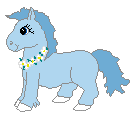The Pros and Cons of Breeding Two Year Olds...
SHOULD WE BREED THE TWO YEAR OLD FILLY?
While the breeding season is moving rapidly along, there is still time to discuss the pros and cons of breeding the filly that turns two years old this spring. When I mention the breeding season is progressing rapidly, I am referring to those breeds for whom early births are important. Many of our quarter horse and paint horse stud stations will stop collecting semen at the end of June. Some of the other breeds do not take it as seriously. The Tennessee Walker breeders even have the right to breed after October 1 and the resulting foal will be considered as being in the next years crop!
We receive many inquiries about breeding the two year filly. The most obvious concern is the effect breeding this youngster will have on her development. Regarding the filly’s development, they will be over ninety five percent grown by the end of their second year. They will certainly put on more weight over the next five years. The way most of our horses are fed, pregnancy will have little effect on the condition of the filly. The demands of the early pregnancy are almost nothing. The only exception is that the filly must stay in adequate condition to provide a healthy environment for the fetus. The fetus does not actually start making significant demands on the mother for nourishment until the last three months. Until then it is growing slowly. Entering the last third of pregnancy the needs of the fetus increase dramatically.
The real challenge with breeding the filly is to find her sexually mature with ovaries and the uterus developed enough to release eggs and allow a pregnancy to become established. The smaller the ultimate size of the filly, the earlier she will sexually mature. This is contrary to the opinion we often have when evaluating the fillies. The tallest filly will be the latest to sexually mature because it takes her longer to reach her ultimate growth.
So what we often see when trying to breed the filly is the lack of regular cycles. She may show heat starting in April or May. It is only when the heats are at regular intervals, and last for four or five days, that she has settled down and become serious about becoming pregnant. We can evaluate the filly by rectally examining the ovaries and uterus for size and activity. If need be, we can ultrasound the ovaries to be sure both are active and the follicles are reaching the minimum of 3 centimeters before ovulating. A blood test will tell us if there are adequate hormone levels present to indicate maturity.
Unless the filly was born early in the year, we often see her waiting until late May or June to settle into the necessary routine. She will certainly breed at this time if the above conditions are met. She is capable of carrying the pregnancy to term and raising it after birth. The disadvantage is that, if she waits until June to breed, it will be about the same time each of the following years when she foals. If she should miss a breeding one year, it could be into late June or July before the next foal is due.
If we can live with the foal being born a little later, the two year old filly can be bred and will satisfactorily raise her baby with little effect on her own development.
CLICK BELOW TO DISPLAY A PRINTER-FRIENDLY COPY OF THIS ARTICLE
Select "Open this file from its current location," if you just want to print it out,
it will open in a simple word processing application, select the print button.
(unless you want to save this article in your computer's memory)

 ShoudWeBreedTheTwoYearOldFilly.rtf
ShoudWeBreedTheTwoYearOldFilly.rtf